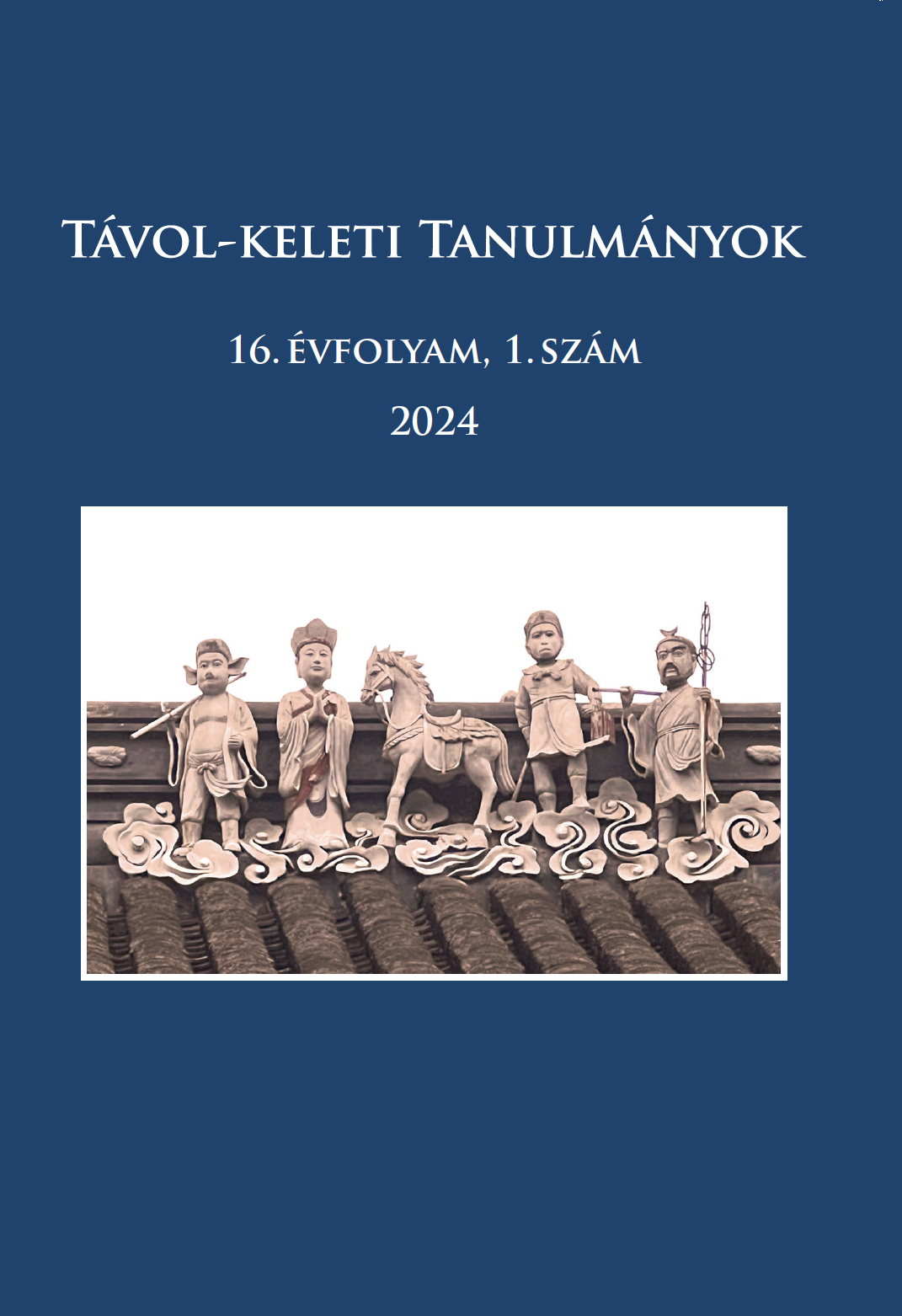China’s Christian General Was a Hungarian Man! The Decade-Long Career of a Fake News Story in the Hungarian Press (1927–1937)
Published 2024-01-04
Keywords
- Feng Yuxiang,
- Warlord Era,
- fake news,
- turanism,
- hungarian press history
- nationalism,
- Chinese history,
- Fengya-borthers ...More
How to Cite

This work is licensed under a Creative Commons Attribution-NonCommercial 4.0 International License.
Abstract
The study presents an instance of fake news that lasted for a decade in the nationalism of the Horthy era in 20th-century Hungary. Feng Yuxiang, referred to in the Hungarian press as the ‘Christian general of China’, was suggested to be of Hungarian origin after Igor Fengya, a judge for the Košice (Kassa) Appeallate Court, had recognized his long-lost younger brother, Ireneus Fengya, in a portrait of the Chinese general taken and published in a Berlin magazine. The Feng–Fengya fake news occurrence was probably one of the earliest, most significant, and longest-lived China-related hoaxes with an international impact on the history of the modern Hungarian press. This piece of fake news spread twice in the Hungarian press between 1927 and 1936. The news was first reported on 22 February 1927, when the sensational announcement was made that Fengya Ireneus, the younger brother of Košice Appellate Court Judge Igor Fengya, was indeed General Feng Yuxiang. Various newspapers adopted the news story one after another, and even a press investigation was launched. Even the Chinese embassy in Vienna issued a statement about the life story of Feng Yuxiang. The news also spread in the United States, in connection with which the person concerned, Ireneus Fengya, also issued a statement. In his statement, he said that his brother, who lived in Košice, had told the truth about almost everything and that he was only wrong about Ireneus being the Chinese Christian general. According to him, he had arrived in California in 1893, and three years later he enlisted in the army, participating in the war on the Philippines. He was indeed in China during the Boxer Rebellion, where he was employed as an interpreter by the Ninth Infantry Regiment of the United States Army. During the outbreak of the Russo–Japanese War, he was in Manchuria and then he spent years in Siberia, China, Japan and other East Asian countries. However, for the past nine years, he had lived in Alaska, from where he occasionally travelled to Los Angeles. This news story was adopted by The New York Times the next day, but there were no reports in the Hungarian press that Ireneus Fengya himself spoke out about the publicity he had received. However, after a few years of absence, the fake news story appeared again briefly in 1936. However, the Košice Appellate Court judge did not live to see the revival, and the nature of the sensation did not prove to be so strong as to cause international attention. General Feng Yuxiang, who died in 1948, probably never learned about the Hungarian news legend about him. Overall, it can be concluded that the stories of the individuals involved in the fake news story came at an opportune time to meet the consciousness of the Turanist Hungarians turning East and of a nation that felt it had a greater calling.
References
- AE Az Est
- AN A Nép
- DM Délamerikai Magyarság
- E Ellenzék
- FU Friss Ujság
- M Magyarország
- Magyarság
- MSZ Magyar Szemle
- NSZ Népszava
- KU Kis Ujság
- NU Nemzeti Ujság
- PH Pesti Hirlap
- PN Pesti Napló
- U Ujság
- UB Uj Barázda
- UI Uj Idők
- UN Uj Nemzedék
- U.S. Cenus. Harry Fengya. Archives.com. http://www.archives.com/1940-census/harry-fengya-ak-10249750 (Utolsó megtekintés: 2019. október 10.).
- Feng Yuxiang 馮玉祥 2006. Wo de shenghuo 我的生活 [Életem]. Peking: Shijie zhisi chubanshe.
- Ablonczy Balázs 2016. Keletre, magyar! A magyar turanizmus története. [Budapest]: Jaffa Kiadó.
- Broomhall, Marshall 1923. Marshall Feng: A Good Soldier of Jesus Christ. London: China Inland Mission and Religious Tract Society.
- Farkas Ildikó 1993. „A turánizmus”. Magyar Tudomány 7: 860–868.
- Farkas Ildikó 2022. „The Hungarian Nippon Society”. Journal of East Asian Cultures 1: 75–103. https://doi.org/10.38144/TKT.2022.1.6
- Fenby, Jonathan 2003. Generalissimo: Chiang Kai-shek and the China He Lost. New York: Simon & Schuster.
- Fenby, Jonathan 2008. Modern China. The Fall and Rise of a Great Power, 1850 to the Present. New York: Ecco.
- Gernet, Jacques 2001. A kínai civilizáció története. Budapest: Gondolat Kiadó.
- Goforth, Jonathan 1919. A Chinese Christian General, Feng Yu Hsiang. Chefoo: printed by James McMullan.
- Jordán Gyula 1999. Kína története. Budapest: Aula.
- Józsa Sándor 1966. Kína és az Osztrák–Magyar Monarchia. Budapest: Akadémiai Kiadó.
- Sheridan, James E. 1966. Chinese Warlord: The Career of Feng Yu-hsiang. Stanford University.
- Szendrei László 2010. A turainzmus. Definíciók és értelmezések 1910-től a II. világháborúig. Máriabesnyő – Gödöllő: Attraktor.
- Wang Mingpei 王民培 2001. „Xunzhao Fengyuxiang zinü de xiongyali ren 尋找馮玉祥子女的匈牙利人 [Feng Yuxiang fiait és leányait kereső magyar ember]”. Zhongguo funü中國婦女. 2001. 9. (Internetes hozzáférés: https://news.eastday.com/epublish/big5/paper148/20010930/class014800023/hwz501813.htm; utolsó megtekintés: 2019. 10. 19.).

